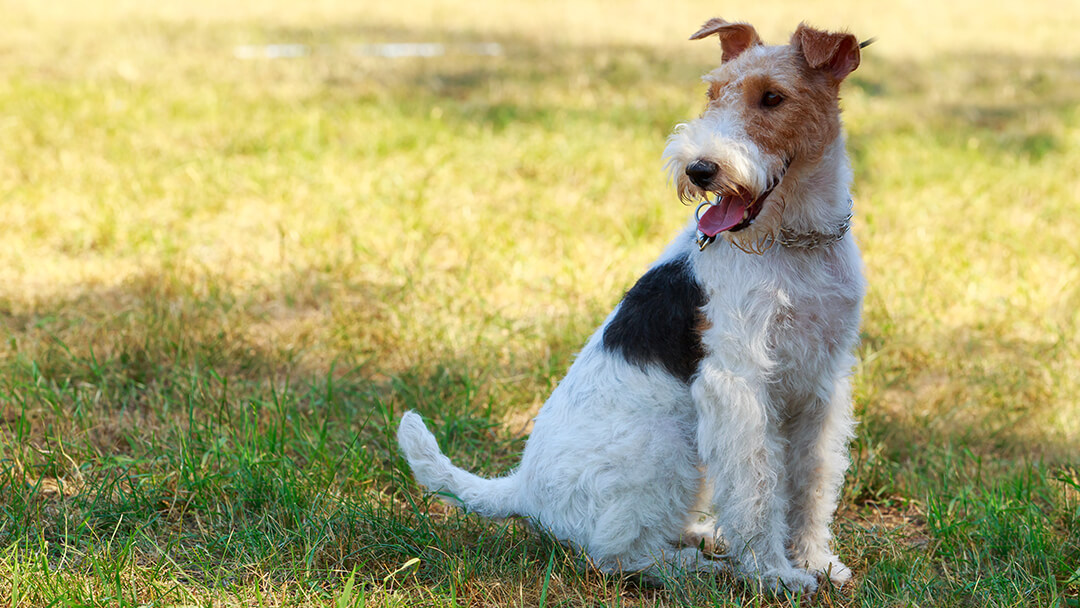
When your dog reaches the age of about seven – a little younger in large breeds (five to six) and older in small breeds (around nine) – they’re generally considered to be ‘senior’. When they reach this age, you’ll need to adjust their diet to support them better. Find out more about feeding older dogs in this guide.
You might notice your dog wanting to take life a little easier, as we all do when we get a little older! There will also be some less visible changes as they approach their senior stage of life; their bodies and digestion start to change and their immune system may need some extra support.
To get the best for your furry friend, it can be a good idea to gradually switch them to a complete, balanced “senior” dog food containing good quality protein, as these are specifically formulated to fit with your dog’s changing nutritional needs and eating habits.
Managing your senior dog's intake
As senior dogs tend to be less active, and have a slower metabolism, you might notice your pet putting on a bit of weight as they get older. As they get on in years, changing to a lower calorie diet can be a good idea.
As older dogs tend to be less active, particularly if they have mobility issues such as osteoarthritis, they can be more prone to obesity. While some health problems can lead to obesity, being overweight can cause health problems too, and put more strain on joints. Because of this, it’s very important to monitor your dog’s body condition regularly.
If you think your dog is overweight, make an appointment to speak to your vet to discuss the best way forward. It may be a simple case that your dog is eating too much, or they may have an underlying medical problem that can be addressed. Either way, your vet may recommend a more calorie-restricted weight loss diet or a specialist diet dog food for older dogs.
Take advice from your vet before increasing your dog’s exercise levels too, especially if they have mobility issues. You might find a reduced-weight bearing form of exercise, like hydrotherapy, would be helpful.
Purina food for older dogs
At Purina, we have a great range of senior dog food to provide your ageing four-legged friend with all they need to thrive in their golden years.
BETA senior dry dog food
Our Purina BETA senior diets are packed full of essential proteins and enriched with all the vital nutrients to support your dog’s mobility, heart and immune system.
Pro Plan senior dog food
Pro Plan senior diets contain an exclusive blend of nutrients to keep them as lively and alert as possible, even in their older years. Additionally, it’s specially formulated to help improve mental sharpness and to assist in maintaining activity levels.
Changing their food
It’s always a good idea, when switching from one food to another, to introduce the new food gradually. The same is true when switching from an adult to a senior dog food diet. Start to add the new food slowly over seven to ten days, increasing the proportions daily. Avoid sudden switching as this can give your dog an upset tummy.
Feeding older dogs
It’s not just your dog’s food that you’ll need to change as they get older, you’ll need to adjust their eating habits too. Here are our top 6 tips for feeding older dogs:
1. Feed little and often
Your dog will probably be used to being fed twice a day, although as they reach their senior years, they may prefer smaller portions more often.
To bring out the food’s taste and smell, serve it at room temperature. Remember, if you’re feeding your older dog food that’s been stored in the fridge, you’ll need to take it out up to two hours before mealtime to get it to the right temperature.
If that’s not possible, it’s fine to briefly microwave wet foods to warm them, but be careful that it’s never hot, or it could burn your dog’s sensitive mouth!
3. Store dry food properly
Dry complete foods should be stored in a dry, clean environment. You can help keep the food smelling and tasting great by keeping it in re-sealable packaging or an airtight container.
When it comes to mealtime, feed your older dog in a quiet place where they can eat in peace without being interrupted. If you have more than one dog, feed them at the same time but separately so that one doesn’t bully or snatch food from the other.
5. Consider a raised food bowl
Older dogs that suffer with arthritis may find it harder to reach down to their food and therefore prefer a slightly raised bowl.
6. Don't overfeed
Remember, older dogs are more prone to weight gain than adult dogs, so be careful not to overfeed them. If you’ve recently changed your dog over to a new food, follow the feeding guide on the pack at first. The guide is only approximate, so monitor your dog’s body condition regularly and adjust the amount to maintain their ideal weight. As an important part of their diet, your dog will need easy access to fresh clean drinking water throughout the day and night.
Looking for more dog feeding advice and useful guides?










